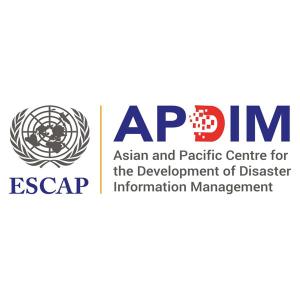Call for Regional and Inter-Regional Cooperation to Reduce the Risk and Negative Impacts of Sand and Dust Storms
۰۸ ژوئیهٔ ۲۰۲۱
A webinar organized on 7 July 2021 on enhancing understanding and expanding inter-regional and regional cooperation on sand and dust storms.

The Asian and Pacific Centre for the Development of Disaster Information Management (APDIM) of the United Nations Economic and Social Commission for Asia and the Pacific (ESCAP) and the Arab Centre for Climate Change Policies (ACCCP) of the United Nations Economic and Social Commission for Western Asia (ESCWA), in the context of the United Nations Coalition on Combating Sand and Dust Storms, organized a webinar on 7 July 2021 on enhancing understanding and expanding inter-regional and regional cooperation on sand and dust storms.
This discussion aimed to share national experiences and showcase examples of transboundary cooperation and highlight potential for collaboration across different regions.
During this discussion, Mr. Abdul Basit Rahmani, Senior Adviser to State Minister, State Ministry for Disaster Management and Humanitarian Affairs, Afghanistan National Disaster Management Authority, Islamic Republic of Afghanistan; Mr. Haythem Belghrissi, Head of Short and Medium Numerical Predictions Section, National Institute of Meteorology, Republic of Tunisia; Mr. Abbas Golriz, Director of the Department of International Environmental Affairs, Ministry of Foreign Affairs, Islamic Republic of Iran; and Mr. Hassan Aldashti, Meteorologist, Climatology Superintendent, Department of Meteorology, Directorate General of Civil Aviation, State of Kuwait contributed to a panel discussion emphasizing the importance of cooperation and collaboration at the national, regional and inter-regional levels.
"This webinar showed that there is a clear interest in the ESCAP and ESCWA countries to enhance inter-regional collaboration to address the impact of sand and dust storms" said Ms. Letizia Rossano, Director, Asian and Pacific Centre for the Development of Disaster Information Management (APDIM), United Nations Economic and Social Commission for Asia and the Pacific (ESCAP).
Ms. Carol Chouchani Cherfane, Director, Arab Centre for Climate Change Policies, United Nations Economic and Social Commission for Western Asia (ESCWA) emphasized that “combating sand and dust storms calls for regional and inter-regional assessments to better understand its transboundary dimensions, as well as its examination and response across sectors and disciplines ranging from disaster risk reduction to climate change adaptation”.
Mr. Feras Ziadat, Chair, United Nations Coalition on Combating Sand and Dust Storms at the Food and Agriculture Organization, highlighted that “the UN Coalition on Combating Sand and Dust Storms is working on raising awareness, facilitate knowledge sharing, and early warning to catalyse global and regional actions to reduce their impact on health, the environment, agriculture and other economic activities.”
The discussion featured examples and opportunities for regional collaboration on sand and dust storms through presentations on Sand and Dust Storm Warning Advisory and Assessment System (SDS-WAS) by Mr. Alexander Baklanov, Science and Innovation Department, World Meteorological Organization; on cooperation for forecasting and modelling socio-economic impact through DustClim and inDust by Ms. Sara Basart, Postdoctoral Researcher, Barcelona Dust Forecast Centre, Barcelona Supercomputing Centre; and on the socio-economic impact of sand and dust storms: data and knowledge gaps by Mr. Nicholas Middleton, Fellow in Physical Geography, St. Anne’s College, University of Oxford and Sand and Dust Storms Expert. Technical presentations on Sand and Dust Storms Risk Assessment in Asia and the Pacific and Regional Climate Projections and Applications for Sand and Dust Storms Analysis in the Arab region were delivered by Mr. Amin Shamseddini (ESCAP) and Ms. Marlene Tomaszkiewicz (ESCWA), respectively.
More than 100 participants attended the webinar from different countries and sectors.
The presentations of the webinar are available on APDIM website.




